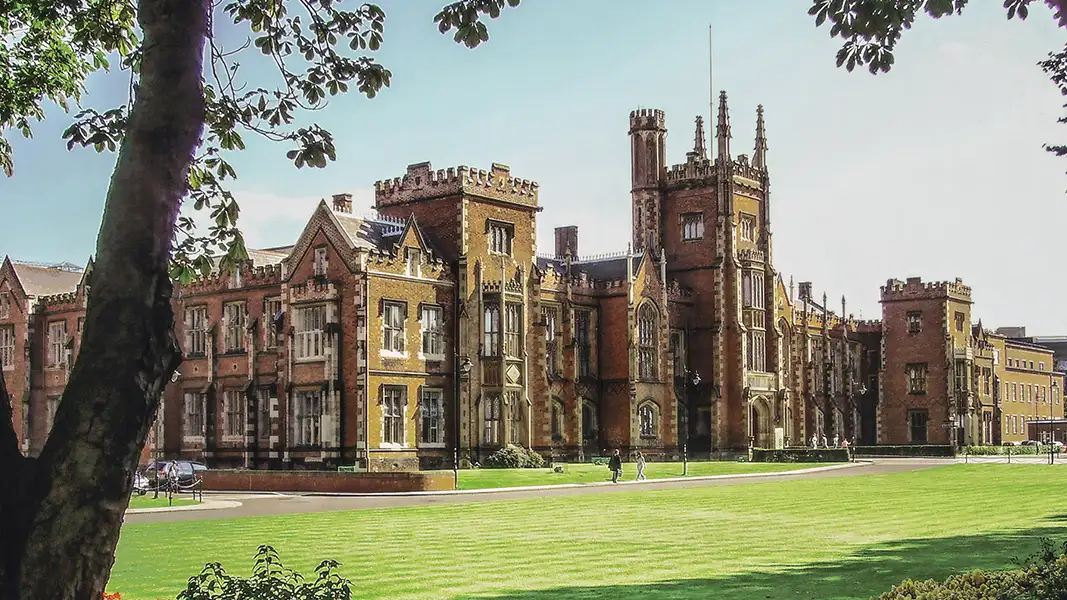Cairnryan – Belfast
Ferry to Northern Ireland
Cairnryan – Belfast
Ferry to Northern Ireland

Depending on the season their are usually 6 daily and 39 weekly sailings between Cairnryan and Belfast.Stena Line provides the ferry from Cairnryan to Belfast. Cairnryan Belfast ferries take around 2 hours 15 minutes. The ferry costs between $252.77 and $1,079.39, depending on ticket details. Prices exclude any service fees. Ferry timetables change seasonally, use our Deal Finder to get live pricing and availability for ferries from Cairnryan to Belfast.
The earliest Cairnryan Belfast ferry typically departs Cairnryan at about 03:30 and the last ferry usually leaves at 23:30.
Ferries from Cairnryan to Belfast sail in around 2 hours 15 minutes. The fastest ferry is approximately 2 hours 15 minutes. Ferry duration can vary by ferry provider and can be impacted by weather conditions.
There is 39 weekly sailings from Cairnryan to Belfast provided by Stena Line. Timetables can change from season to season.
The price of a ferry from Cairnryan to Belfast typically range between $252.77* and $1,079.39*. On average the Cairnryan Belfast ferry is $849.39*. The cheapest Cairnryan Belfast ferry prices start from $252.77*. The average price for a foot passenger is $261.88*. The average price for a car is $865.33*.
Pricing will vary depending on number of passengers, vehicle type, route and sailing times. Pricing is taken from searches over last 30 days and exclusive of service fees, last updated 1 April 2025.
The distance between Cairnryan to Belfast is approximately 66 miles (107km) or 58 nautical miles.
Yes, Cairnryan Belfast ferries allow cars onboard with Stena Line between Cairnryan and Belfast. To view car ferry tickets and prices between Cairnryan and Belfast use our Deal Finder.
Stena Line allow foot passengers on Cairnryan Belfast ferries.
Stena Line allow pets on ferries from Cairnryan to Belfast. Please also note that your pet may have to stay in the vehicle during the journey.
More routes than anyone else.

Compare fares, times & routes in one place.
Change plans easily with flexi tickets.

Book e-tickets & manage trips in-app.
Live ship tracking & real-time updates.

Top-rated customer support when you need it.
Cairnryan is a Scottish port village located in Dumfries and Galloway, lying on the eastern shore of Loch Ryan. Important in maritime history, Cairnryan has two ferry terminals connecting Scotland to Northern Ireland. The first opened in 1973, originally operated by Townsend Thoresen and now by P&O Ferries, links Scotland with the port of Larne. The second Cairnryan ferry terminal is located at Old House Point, operated by Stena Line, linking to the Port of Belfast.
The village can trace its origins back to 1701 when it was established for workers employed on the Lochryan Estate which features a deer park and bowling green. Facilities in Cairnryan include the Lochryan Hotel, a few guest houses and bed and breakfast establishments, a caravan site built on the site of an old war campsite, a village shop and The Merchant's House Restaurant.
Belfast Harbour is an important seaport in the United Kingdom, with one of the leading ferry operators, Stena Line, connecting it with Liverpool and Cairnryan. You can also reach Belfast from the Isle of Man, with seasonal services provided by Steam Packet.
Belfast is Northern Ireland's capital city, surrounded by mountains creating a specific climate beneficial to horticulture. Moreover, it lies at the mouth of the River Lagan located in County Antrim, although parts of east and south Belfast are actually located in County Down. It is, then, quite a green space and offers visitors plenty of parkland and forest parks to explore from Cave Hill Country Park and Lagan Valley Regional Park to the Victorian Botanic Gardens in the heart of the city.
From an architectural perspective Belfast has some fine buildings including the Edwardian City Hall and the modern Waterfront Hall. Many of the city's Victorian landmarks, including the main Lanyon Building at Queen's University Belfast and the Linenhall Library, were designed by Sir Charles Lanyon.